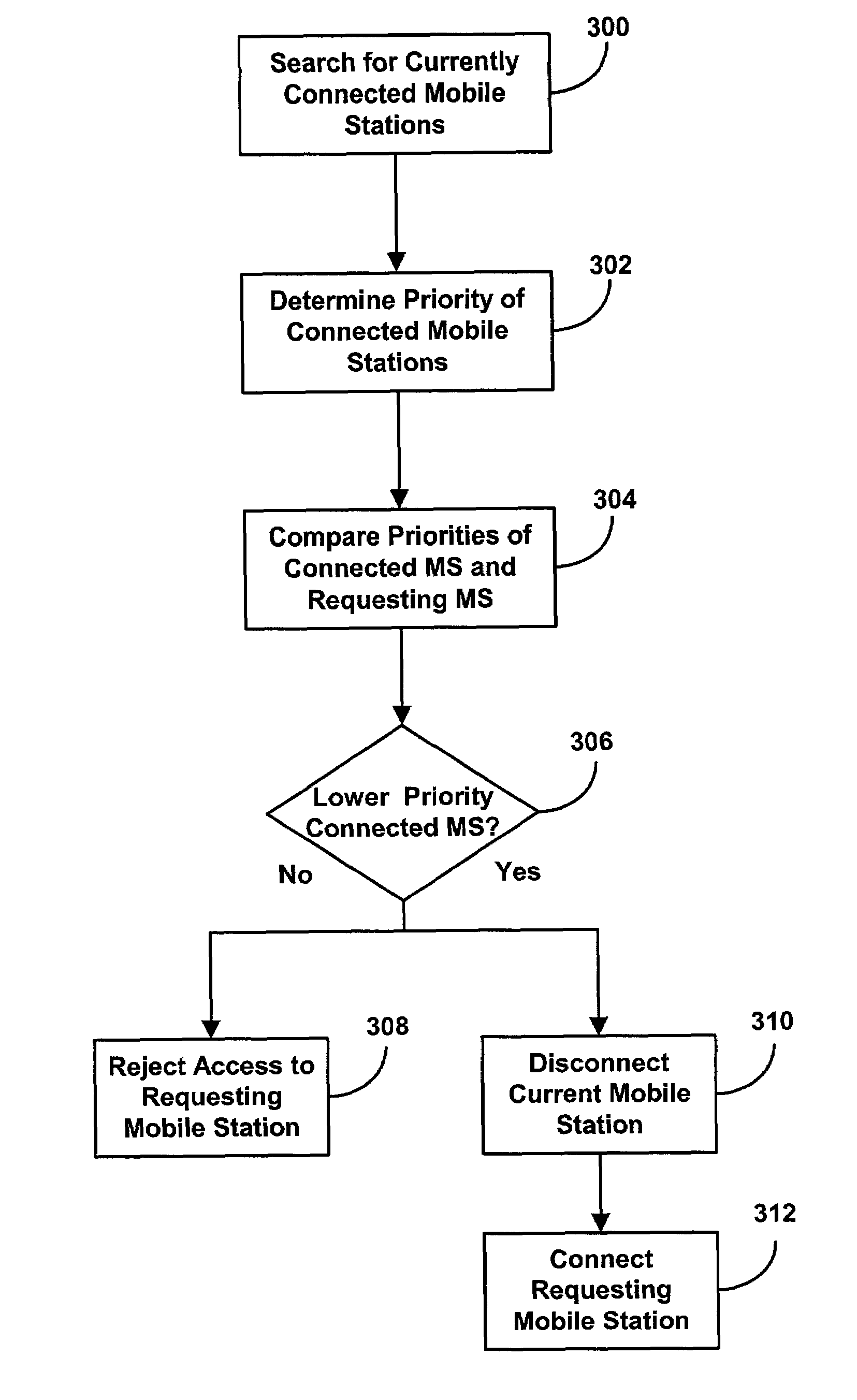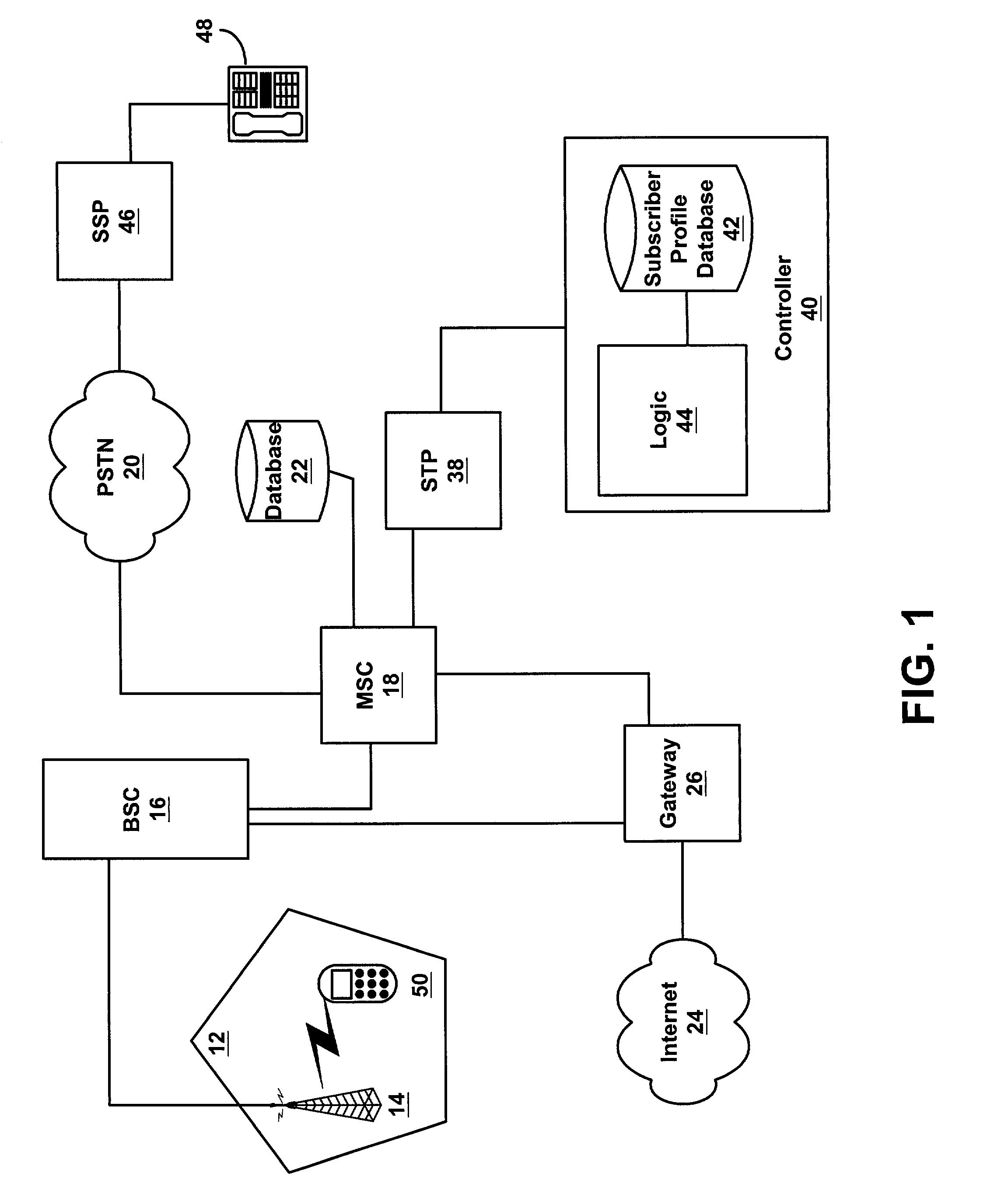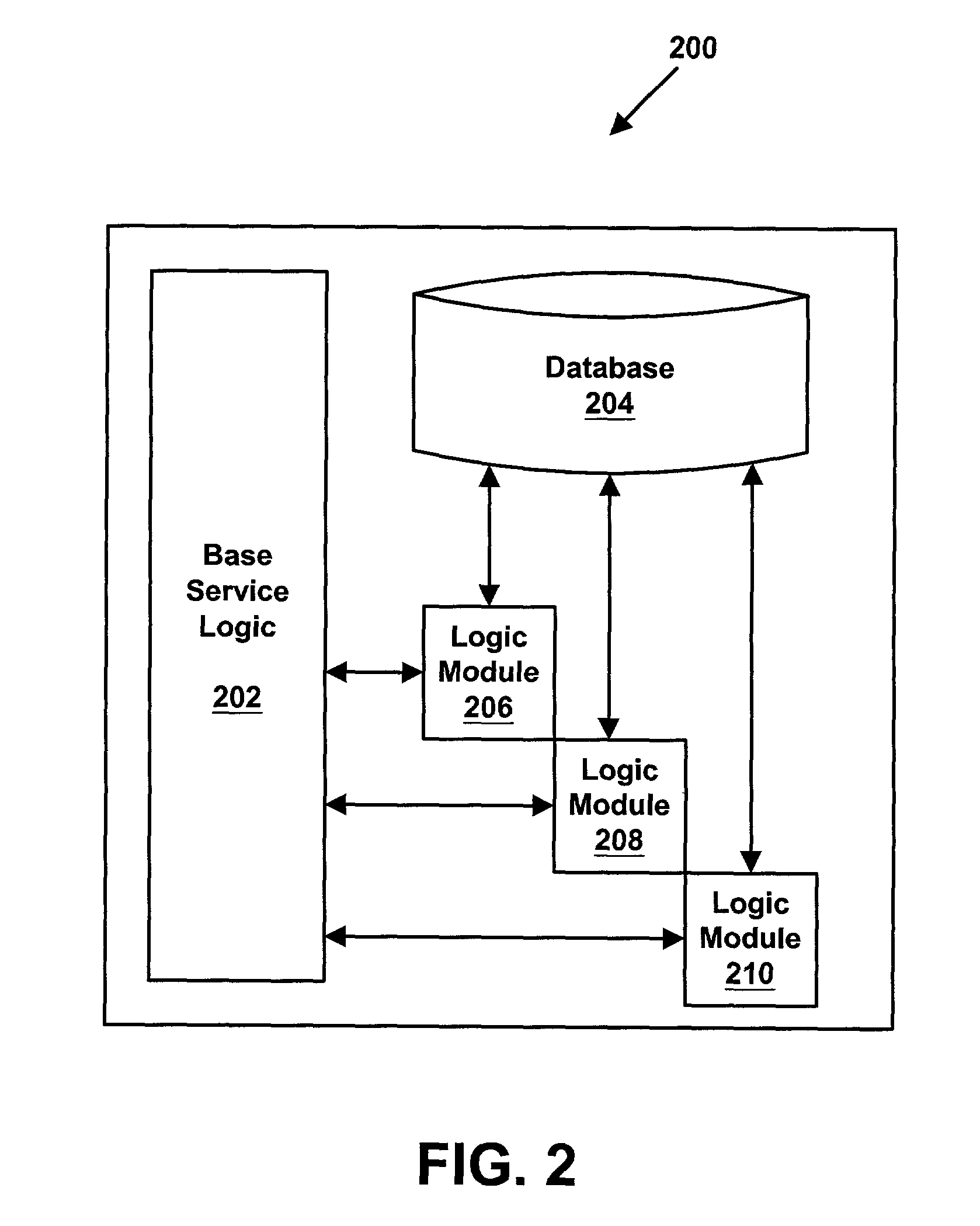Method for providing differing service levels in a wireless telecommunications network
a wireless telecommunications network and service level technology, applied in the field of wireless communications networks, can solve the problems of limited capacity of wireless networks and substantial cost of solutions
- Summary
- Abstract
- Description
- Claims
- Application Information
AI Technical Summary
Problems solved by technology
Method used
Image
Examples
Embodiment Construction
A. Exemplary Architecture
[0019]FIG. 1 is a block diagram illustrating components of an exemplary wireless telecommunications network 10 (“wireless network”). The wireless network 10 includes multiple geographical regions, known as cells 12. A cell 12 contains a base transceiver station 14 (“base station”), which is usually located within the cell 12. The base station 14 is able to communicate over an air interface with a mobile station 50 also located within the cell 12. A mobile station 50 may be any device capable of communicating with the base station 14, including a cellular phone, a mobile phone, a personal digital assistant (“PDA”), a wireless Internet appliance, or another device. Additionally, the cell 12 can contain more that one mobile station 50.
[0020]Many different methods of communication may be used between the mobile station 50 and the base station 14. Time Division Multiple Access (“TDMA”) is one popular method for wireless communications. In TDMA systems, the base s...
PUM
 Login to View More
Login to View More Abstract
Description
Claims
Application Information
 Login to View More
Login to View More - R&D
- Intellectual Property
- Life Sciences
- Materials
- Tech Scout
- Unparalleled Data Quality
- Higher Quality Content
- 60% Fewer Hallucinations
Browse by: Latest US Patents, China's latest patents, Technical Efficacy Thesaurus, Application Domain, Technology Topic, Popular Technical Reports.
© 2025 PatSnap. All rights reserved.Legal|Privacy policy|Modern Slavery Act Transparency Statement|Sitemap|About US| Contact US: help@patsnap.com



